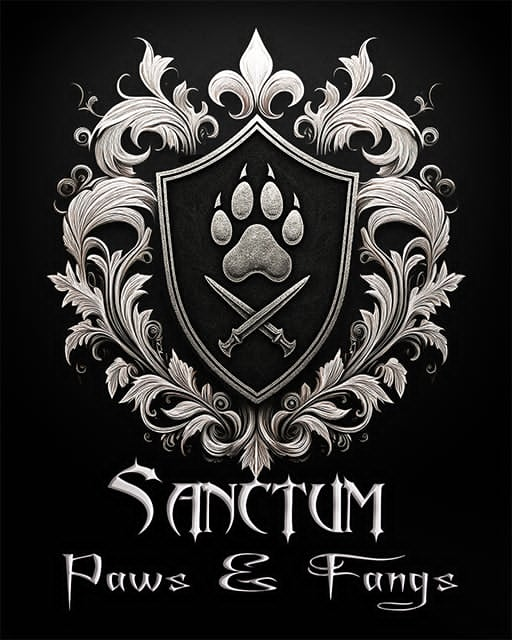Itching, Scratching, and Sniffling: Could It Be What's in Their Bowl?
The sound of incessant scratching, the sight of a dog persistently licking their paws, or a cat struggling with recurring ear infections – these are familiar and frustrating experiences for countless pet parents. We often blame seasonal allergies, environmental irritants, or even behavioral quirks. But what if the source of your pet's discomfort isn't in the air, but in the very food you're putting in their bowl?
At Sanctum Paws and Fangs, we hear these stories daily. Many chronic cases of itching, scratching, and sniffling are not just environmental reactions; they are often direct signals that your pet's body is reacting negatively to something they're eating. Their immune system is sounding an alarm, manifesting as a frustrating array of allergy-like symptoms.
It's time to become a detective of your pet's diet. Let's uncover how the contents of their bowl could be the hidden culprit behind their persistent discomfort.
The Gut-Skin Connection: How Food Triggers Allergies
Your pet's digestive system and skin are intimately connected. The gut is a major player in the immune system, and when it's compromised by poor diet, the effects often show up on the surface – the skin and respiratory tract.
Here's how what's in their bowl can lead to "itching, scratching, and sniffling":
Inflammation from Indigestible Ingredients:
The Culprit: Cheap fillers like corn, wheat, soy, generic "meat meals," and artificial additives are difficult for pets to digest.
The Impact: When the gut struggles, it can become inflamed, leading to "leaky gut syndrome." This allows undigested food particles to pass into the bloodstream, where the immune system identifies them as invaders, triggering a widespread inflammatory response. This inflammation often targets the skin, causing itching, redness, and irritation.
True Food Allergies and Sensitivities:
The Culprit: While often mistakenly blamed on grains, true food allergies are typically a reaction to a specific protein source (e.g., beef, chicken, dairy, even fish) that the pet has been exposed to repeatedly. Artificial colors, flavors, and preservatives can also trigger sensitivities.
The Impact: The immune system overreacts, releasing histamines and other chemicals that cause intense itching, swelling, rashes, and chronic ear infections.
Lack of Essential Fatty Acids:
The Culprit: Many low-quality foods lack sufficient amounts of Omega-3 fatty acids (EPA and DHA), which are powerful natural anti-inflammatories and crucial for skin barrier health.
The Impact: Without these, the skin's natural protective barrier is weakened, making it more susceptible to irritants, allergens, and secondary infections, leading to dry, flaky, itchy skin.
Yeast Overgrowth:
The Culprit: Diets high in carbohydrates and sugars (common in many kibbles) can feed yeast in your pet's body.
The Impact: Yeast overgrowth often manifests as yeasty-smelling skin, red paws, chronic ear infections, and constant itching, especially in folds of skin or between toes.
Common Symptoms Linked to Dietary Issues:
Skin & Coat: Constant scratching, licking, chewing (especially paws), red or inflamed skin, hot spots, rashes, hair loss, dull or greasy coat, dandruff, "scaly" skin, recurrent skin infections.
Ears: Frequent ear infections (often yeasty or bacterial), redness, head shaking, ear scratching, discharge.
Respiratory/Nasal: Persistent sniffling, reverse sneezing (less common but possible with severe inflammation).
Digestive: Concurrent issues like vomiting, diarrhea, excessive gas, or loose stools often accompany skin problems, signaling a deeper gut issue.
Finding Relief: A Dietary Overhaul
If your pet is battling chronic itching, scratching, or sniffling, and other causes have been ruled out, it's highly probable their diet is playing a role. Here’s how to approach a dietary overhaul:
Consult Your Vet: Discuss your concerns about diet as a possible cause.
Transition to a Limited Ingredient Diet (LID): This is often the most effective diagnostic tool. Choose a food with a novel protein source (one your pet hasn't eaten before, like duck, venison, rabbit) and minimal other ingredients. Stick to it strictly for 8-12 weeks.
Focus on Whole, High-Quality Ingredients: Look for foods with clearly named, single-source animal proteins, limited and digestible carbohydrates (like sweet potato or pumpkin), and absolutely no artificial colors, flavors, or synthetic preservatives.
Boost Omega-3s: Ensure their diet is rich in Omega-3 fatty acids (from fish oil like salmon or sardines) which are potent anti-inflammatories.
Patience is Key: It takes time for the body to heal and for allergens to clear the system. Be consistent and give the new diet a fair chance.
At Sanctum Paws and Fangs, we understand the relief that comes from finally finding a solution. We meticulously vet every pet food and supplement we carry, prioritizing formulas designed to support a healthy immune system, robust gut health, and vibrant skin and coat – free from the very ingredients that trigger common allergies.
Don't let your pet suffer through another day of itching and discomfort. Look in their bowl. A simple change could be the answer to their long-awaited relief and your peace of mind.
[Discover Hypoallergenic & Skin-Friendly Pet Foods at Sanctum Paws and Fangs][Advocate for Cleaner Ingredients: Sign Our Humane Science Blueprint Petition on Change.org](Link: https://www.change.org/HumaneScienceBlueprint)



























